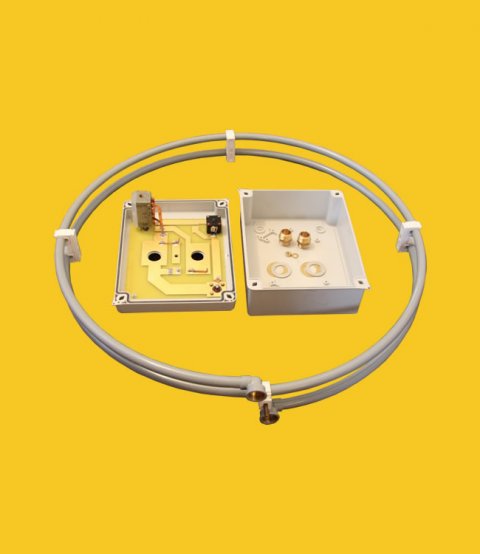MLA-M v.5 KIT
- Home
- Magnetic loop antennas
- MLA-M v.5 KIT
MLA-M v.5 KIT
The oldest and best sold two-turn magnetic loop antenna developed by OK2ER. Its wide-band function achieved by a patented design is just excellent. No other MLA is available on the world market that can offer such wide-band coverage. This antenna is designed for QRP operation, 10 W at 3.5 MHz, 20 W elsewhere.
As a semi-kit, not assembled, this antenna is delivered without a test protocol.
MLA-M Magnetic Loop Antenna maufactured by BTV company is a „plug-and-play“ product. It is designed exclusively for QRP operation and can be used indoors on all radio-amateur short-wave bands except 160 meters. With only 60-cm loop diameter, this small antenna can be used on eight bands: 3.5, 7, 10, 14, 18, 21, 24 and 28 MHz. With an advantage it can also be used on CB bands. A small Magnetic Loop Antenna cannot be expected to perform with an equal efficiency of transforming RF power into RF magnetic field like a half-wave dipole can. Against such dipole the MLA loss is typically 10 dB, at 3.5 MHz, 15 dB. The MLA-M concept allows, however, a radio amateur to operate from a transient QTH as well as from protected locations like urban zones where the rules would not allow to hang a clasical long-wire antenna. Compared to ionosphere effects, the 10-dB loss of an indoor MLA against the half-wave dipole can be neglected.
MLA-M is also useful for „digital-mode“ operations where sophisticated protocols allow to process signals that „cannot be heard“.
The perfect impedance matching of MLA-M on all bands, 3.5 to 28 MHz, is achieved by a circuit developed by BTV, and covered by EU Industrial Protection. The wide-band operation of MLA-M is achieved by the use of a two-turn loop, and by that one of the turns is shorted for higher frequncy bands. MLA-M is tuned by two variable capacitors, offering frequency tuning and impednce matching like any tuner. Over the full frequency coverage, this concept allows to exactly adjust impedance matching to 50 +/- j0 Ohms. Other MLA types cannot be tuned so precisely due to physical reasons. Band switching utilizes two jumpers as an easy solution. Other switching modes cannot offer such good results as the loop radiation resistance is extremely low.







